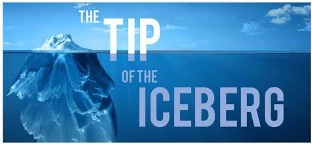How Well do we really know our Customers?
or
“The Why behind the Why?”

The conversation started with a very good Question; “Is today’s Customer any different than the one a few months ago?” After a bit of thought, I believe that the simple answer is; No and Yes. No, they are no different today, than a few months ago because “People still buy when they perceive that their needs are Satisfied.” Yes, because in many cases the “Needs themselves have greatly changed.”
So, back to basics for a moment. People buy when they perceive that their needs are satisfied: Factual / Physical (the What) and Emotional / Persona (the Why) and Treatment (the How).
I think that the real question is, “How well do we really know our customers?” The Factual / Physical elements tend to be the easy part, the ante-up to the Sale. The deal makers and breakers are the Emotional / Personal and the Treatment components.
For example: We may have determined that the one of the Customers is a golfer. It is a no brainer; Recreation makes the Key Emotional Need list. Now what? Well, are we even certain that because they play golf that they have as Emotional Recreation Need? Could it be, in reality, an Investment Need? Maybe the Customer’s perception is that a home on the third hole has a great resale value?
The Emotional Need of Recreation might just be the tip of the iceberg or a single Chapter Heading of an entire book. Do we invest the time, or have the level of curiosity, to as fully as possible, unpack the “why behind the why?” Do we peal the onion past the first layer or two or just be satisfied with the tip of the iceberg?
I submit that maybe we do not know the Customer as well as could or should. It is easy to jump to conclusions; to curb qualify. Customers are a product of their entire history and their current environment. The more we know about them as people, the more power we have to influence their decisions. Knowledge is Power. Knowing what the Customer wants (factual/physical) is the first step, Understanding the details of Why they want what they want is the deal maker. We need to fully understand who they are as people, to be able to effectively help them through the buying process.
Many of today’s Customers arrive at the model with a heightened level of anxiety. That anxiety is fed by the unknown and the uncertain. “Doing For the Customers and not Do To the Customers” will go a long way to building the Trust necessary in the current environment. Our ability to demonstrate an understanding of the reality and magnitude of their circumstance can instill a bit of confidence for them to move forward.
Customers have a lot weighing on their minds today. What can we do to help them in the decision-making process? We can customize our presentation (Treatment) with terms and verbiage familiar and comfortable for the Customer. We can educate the Customers in the areas that they have interest and concern; Teachers and Guides. We need to help them through the
Sense the inception of TRUST it has all been about Understanding the Customer. That has not changed. I believe it is more important today than ever before.

